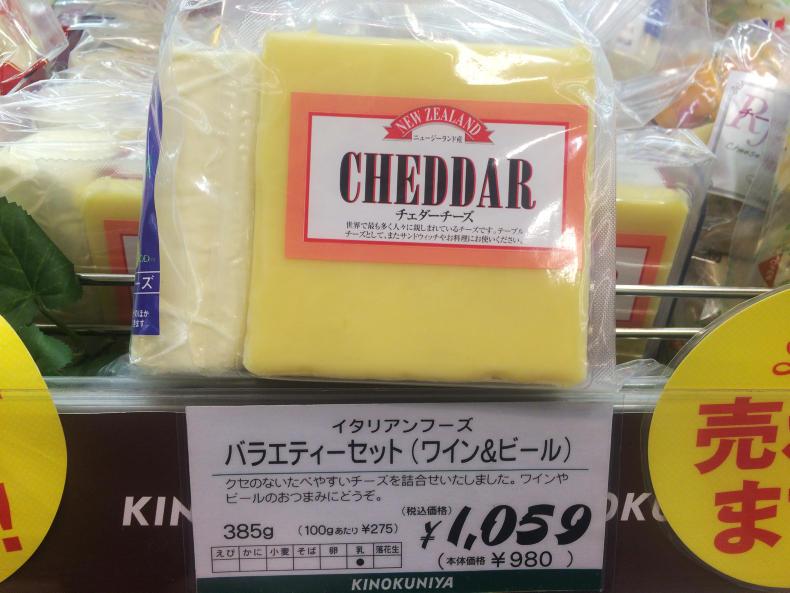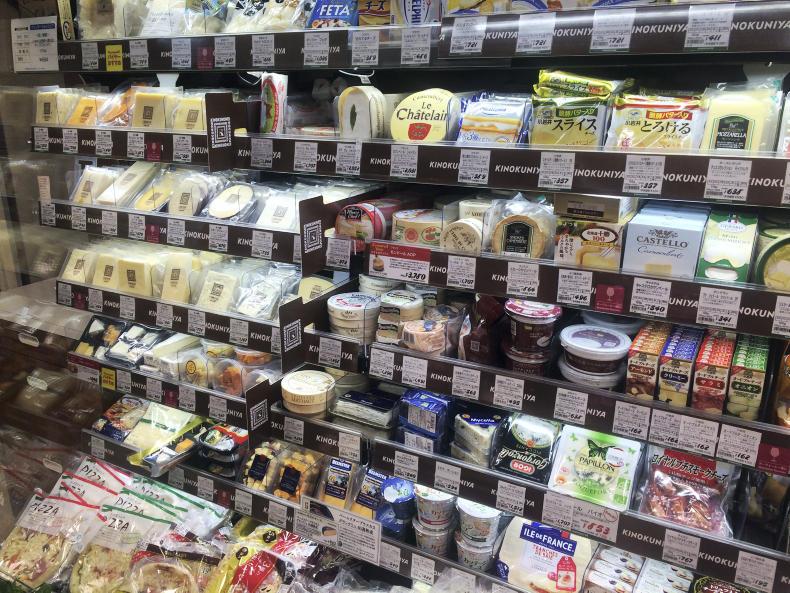Traditionally, Ireland has always been dependant on the UK to import most of its cheddar. But cheese exports to the UK dropped by 10% to 125,000t last year, and as Brexit approaches industry leaders are hoping that Japan could provide a new market outlet for Irish cheddar.
The Japanese consume up to 300,000t of cheese every year and are only 15% self-sufficient in cheese production.
As Minister Creed and Bord Bia CEO Tara McCarthy continue to work on a trade mission in Japan and South Korea this week, they have been stressing the importance of more Irish cheddar gaining entry to the Japanese market.
“Obviously, one of our criteria for our dairy industry at the moment is looking for opportunities for cheddar cheese because traditionally 50% to 60% of that product has been going to the UK,” McCarthy said.
“What we want to do is create a platform for here [Japan]. Can you say how many tonnes will transfer in? Well the stats at the moment show that between 4,000t and 5,000t have been reaching this market [from Ireland], and it’s on a huge upward growth of around 45%.”
Although the market is dominated by New Zealand and Australian imported cheddar, the rapid growth of the area may allow access for Irish cheddar processors.

A 385g block of New Zealand cheese sells for roughly €8 in a Japanese supermarket.
Conor Muvihill, director of Dairy Industry Ireland, also agrees that there could be room for Irish cheddar in the Japanese market. “There aren’t that many countries around the globe that have a taste for cheddar and cheddar types of cheeses,” Mulvihill said. Listen to him in our podcast below.
“But Japan is one so we’re very much focusing on to see what can be done, we’re battling with the Kiwis and the Australians in their own backyard, it’s as if they were coming to the UK for us.”
The current tariff rate on imported cheese is 29.8%, but this will be reduced once the EU-Japan trade deal is ratified next year, which should help to progress Irish trade.
Read more
Dairy opportunity in Japan trade deal
In pictures: what do Japanese consumers eat?
Navigating Japan’s high-value beef market
Traditionally, Ireland has always been dependant on the UK to import most of its cheddar. But cheese exports to the UK dropped by 10% to 125,000t last year, and as Brexit approaches industry leaders are hoping that Japan could provide a new market outlet for Irish cheddar.
The Japanese consume up to 300,000t of cheese every year and are only 15% self-sufficient in cheese production.
As Minister Creed and Bord Bia CEO Tara McCarthy continue to work on a trade mission in Japan and South Korea this week, they have been stressing the importance of more Irish cheddar gaining entry to the Japanese market.
“Obviously, one of our criteria for our dairy industry at the moment is looking for opportunities for cheddar cheese because traditionally 50% to 60% of that product has been going to the UK,” McCarthy said.
“What we want to do is create a platform for here [Japan]. Can you say how many tonnes will transfer in? Well the stats at the moment show that between 4,000t and 5,000t have been reaching this market [from Ireland], and it’s on a huge upward growth of around 45%.”
Although the market is dominated by New Zealand and Australian imported cheddar, the rapid growth of the area may allow access for Irish cheddar processors.

A 385g block of New Zealand cheese sells for roughly €8 in a Japanese supermarket.
Conor Muvihill, director of Dairy Industry Ireland, also agrees that there could be room for Irish cheddar in the Japanese market. “There aren’t that many countries around the globe that have a taste for cheddar and cheddar types of cheeses,” Mulvihill said. Listen to him in our podcast below.
“But Japan is one so we’re very much focusing on to see what can be done, we’re battling with the Kiwis and the Australians in their own backyard, it’s as if they were coming to the UK for us.”
The current tariff rate on imported cheese is 29.8%, but this will be reduced once the EU-Japan trade deal is ratified next year, which should help to progress Irish trade.
Read more
Dairy opportunity in Japan trade deal
In pictures: what do Japanese consumers eat?
Navigating Japan’s high-value beef market







 This is a subscriber-only article
This is a subscriber-only article










SHARING OPTIONS: